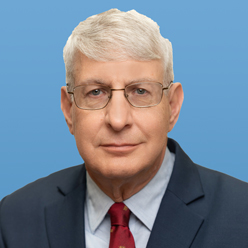For decades, the Kremlin has sought to intimidate foreign powers by threatening to use nuclear weapons. In the current Ukraine war, nuclear threats have been a key way by which Russia’s government has sought to restrain Western aid to Kyiv. The efficacy of Moscow’s nuclear brinksmanship, however, seems to be waning.
Last week, President Trump signaled he was supremely unimpressed by Vladimir Putin’s nuclear saber-rattling. Trump’s dismissal of Putin’s latest nuclear warning capped an already bad month for the Russian leader—one that involved the cancellation of a US-Russia summit in Budapest after it became clear that Putin would not agree to a ceasefire in Ukraine. The US leader also imposed sanctions on Russia’s two biggest oil companies, mused publicly about sending long-range Tomahawk missiles to Ukraine, and reportedly authorized giving Ukraine new intelligence assistance to facilitate strikes on energy infrastructure deep inside Russia.
Putin responded predictably. On October 26, he issued a new version of the nuclear threats he has been making since he invaded Ukraine back in 2022. Wearing military fatigues, the Russian leader announced that his government had just tested a nuclear-powered and nuclear-capable missile that could deliver a nuclear payload anywhere in the world.
Asked the next day about Putin’s statement, Trump responded coolly that the United States doesn’t need missiles that can roam the world because US submarines can strike Russia from close by. “We test missiles all the time,” he added.
Then, turning visibly angry, he made clear Putin’s missile talk wasn’t distracting him from demanding Russia agree to a ceasefire in Ukraine. “He ought to get the war ended,” Trump snapped. “A war that should have taken one week is now in its soon fourth year. That’s what he ought to do instead of testing missiles.”
Of course, the Kremlin has a long history of such nuclear threats. In his day, Soviet leader Nikita Khrushchev frequently boasted about the USSR’s atomic capabilities, underscoring them with an open-air test of the world’s most destructive nuclear weapon, the “Tsar Bomba,” in 1961. Later, Russia’s first post-Soviet president, Boris Yeltsin, ordered the development of new tactical missiles to counteract what he saw as a growing threat from NATO.
In 2018, Putin said cockily that he was sure Russia would win a nuclear war, if only in the afterlife. In the event of a nuclear strike on Russia, he said, Moscow’s retribution would be so swift that while “we, the victims of aggression, will go to heaven as martyrs, they will simply croak, because they won’t even have the time to repent.”
When he invaded Ukraine, Putin once again invoked the specter of nuclear incineration: “Anyone who tries to interfere with us, and beyond that create a threat to our country and people, must know that Russia’s response will be immediate and will bring you consequences that you have never encountered in your history.”
Putin’s warnings certainly had their effect early on in the war, with Western leaders essentially saying people should trust his words. President Joe Biden said in October 2022 that Putin “is not joking when he talks about the potential use of tactical and nuclear weapons.” He added, “We have not faced the prospect of Armageddon since Kennedy and the Cuban Missile Crisis.
Then-German chancellor Olaf Scholz, defending his caution about sending Leopard tanks to Kyiv, said, “We need to do everything to avoid a direct military confrontation between NATO and a heavily armed superpower such as Russia, a nuclear power.”
At the time Biden spoke, Ukraine was desperately calling for American ATACMS missiles to carry forward its Kharkiv offensive, in which it pushed Russian forces out of its second-biggest city and far back to the east. Ukraine seemed in a position to retake even more land and potentially surround thousands of Russian troops.
But the Biden administration held back, and concerns over Russia’s nuclear threats were a big reason why. CNN reported the United States was worried by “not one indicator, but a collection of developments, analysis, and—crucially—highly sensitive new intelligence” that lower-level Russian commanders were explicitly talking about the potential use of a nuclear device.
Illia Pavelenko, a former Ukrainian intelligence chief, said all this was a ruse. By his account, Russia fed to known Western agents a steady stream of what looked like concrete indications that it was preparing to use nuclear arms to prevent the United States from sending the ATACMS. That disinformation, in turn, had a clear effect on America’s calculus—and on the Biden administration’s Ukraine policy.
Not so now. Trump, moreover, is not the only one eying Putin’s nuclear threats with growing skepticism. “Irresponsible rhetoric” from Russia about nuclear war “is not going to deter our support for Ukraine,” British prime minister Keir Starmer said last November. Sweden joined NATO on March 24, 2024, despite warnings from the Russian Embassy that it would become a “legitimate target for Russia’s retaliatory measures.” And Germany, where fears of Russian nukes have long been strong, continues to press ahead with its rearmament.
To be sure, Putin can be counted on to continue his nuclear rhetoric. But Western leaders seem set on making policy based on realities on the ground, rather than the Kremlin’s attempts at nuclear intimidation.
Want these sent to your inbox?
Subscribe
Vladimir Putin’s Nuclear Threats Are Getting Old
Related Categories:
Arms Control and Proliferation; Public Diplomacy and Information Operations; Warfare; Russia
